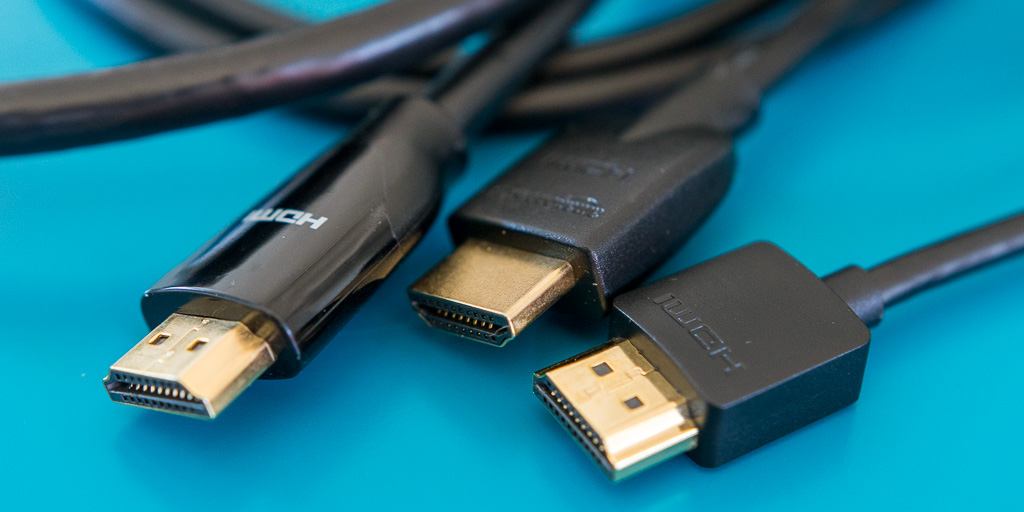
HDMI ARC and eARC: Everything You Need To Know
If you owned a TV in the past 10 years, then you are probably familiar with HDMI, and if you own a 4K TV, or an AV receiver, or a soundbar, then you might have noticed a little label next to at least one of the HDMI inputs that says “ARC” or “HDMI ARC.” But what does ARC really mean? HDMI or High-Definition Multimedia Interface has been the most popular digital connector for TVs, AV receivers, and other audio equipment for over a decade now. HDMI evolved over time, and there have been many versions of the famous protocol (it’s version 2.1 for now).
HDMI ARC which stands for (Audio Return Channel) is a different, smarter protocol that is included within the standard HDMI protocol. The purpose of ARC is to simplify a complicated AV set-up by eliminating the need for multiple cables and using one HDMI ARC cable instead.
How to use HDMI ARC? Does your TV support it? And what is eARC? We are going to try and answer all these questions in this deep dive into the HDMI protocols.
Also Read: These Are The Best Original Netflix Movies 2020
HDMI and HDMI ARC
HDMI was first introduced back in 2002, and soon it became the main AV connection eliminating all other traditional AV connections such as SCART and others. HDMI was the most convenient way to send high-definition visuals and audio from a source to a receiver like a TV, AV receiver, or a soundbar.
With the evolution of technology, HDMI kept its place as the go-to connection by evolving itself. New versions of HDMI brought support for new audio and video technologies such as 4K, 8K, and HDR among others. HDMI ARC didn’t show up until 2009, it was introduced as part of HDMI 1.4 as a new technology that will eliminate the need for an optical cable.
Before HDMI ARC, if you have a gaming counsel, or a Blu-Ray player, or even a smart TV but you don’t want to use your TV’s speakers. Instead, you would like to hear the audio from a soundbar or any other type of external speaker. Previously, you would need to connect an optical cable between your TV and the optical input in the audio device. Well, you don’t need to do that anymore with HDMI ARC.
What devices support HDMI ARC?
If you are wondering whether you can use HDMI ARC or not, then all you have to do is to check the back of your TV and your audio device (whether it’s a soundbar or an AV receiver) for matching “ARC” HDMI ports.
The ports are usually labeled with “ARC”. If they are not, then if the device is a late-2009 model or newer, you should have at least one ARC port that you can use. If you are not sure, feel free to google your TV model or check the user manual.
What is HDMI eARC?
HDMI eARC or enhanced Audio Return Channel is the next generation of ARC. It’s a new protocol that started being implemented with the latest version of HDMI, HDMI 2.1. The main advantage eARC has over ARC is that it’s faster, it also features a wider bandwidth. This will allow users to send higher-quality audio from TVs to soundbars and AV receivers.
This means that eARC will be able to support all the high-quality formats that ARC couldn’t support such as 4K Blu-rays, and object-based formats such as Dolby Atmos and DTS:X. However, it’s still unclear whether manufacturers will choose to support all those formats or only a few.
Just like the case with ARC, to benefit from eARC, you will need two compatible HDMI eARC ports on both of your devices. This means that both your TV and your AV receiver should be up-to-date with HDMI 2.1 which was newly launched. Unfortunately, not that many devices support HDMI 2.1 yet since it’s still a new protocol.
Probably not, is the short answer. According to HDMI.org, if you are using a High-Speed HDMI cable with Ethernet, or even a standard HDMI cable with Ethernet then you should have no problem using the same cable for eARC. However, if you have an old HDMI cable then you might face some problems due to the extra bandwidth that eARC requires.
In January 2020, HDMI.org announced a new certification program that requires every HDMI cable labeled Ultra High Speed to support HDMI 2.1 including eARC.
What devices are compatible with eARC?
HDMI 2.1 was first launched in 2019, so there are still not that many devices that support this new protocol. LG was the first brand to release TVs with HDMI 2.1 support in late 2019, all LG OLED 2020 TVs support HDMI 2.1 as well. When it comes to other brands, not all new TVs from Sony, Panasonic, Samsung and others are HDMI 2.1 certified. Some of them support HDMI 2.0 but claim to support all HDMI 2.1 features including eARC.
When it comes to other products, we are starting to see new products that support HDMI 2.1 slowly. Pioneer and Onkyo were the first two companies to offer eARC updates on some of their AV receivers including Onkyo TX-RZ830, Integra DRX-5.2, Pioneer SC-LX502, and Pioneer VSX-LX503.
Other companies started to follow including Sony that offered eARC updates to its HT-ST5000, HT-ZF9, HT-XF9000 soundbars, and STR-DH790, STR-DN1080 AV receivers. Last but not least we have Sennheiser Ambeo Soundbar that also supports HDMI 2.1 and eARC.
While the list of HDMI 2.1 and eARC certified devices is still short, it’s quickly growing with more companies releasing new products every month. So if you are in the market for a new device for your entertainment set-up, we recommend you to pay attention and pick something with HDMI 2.1 certification.
